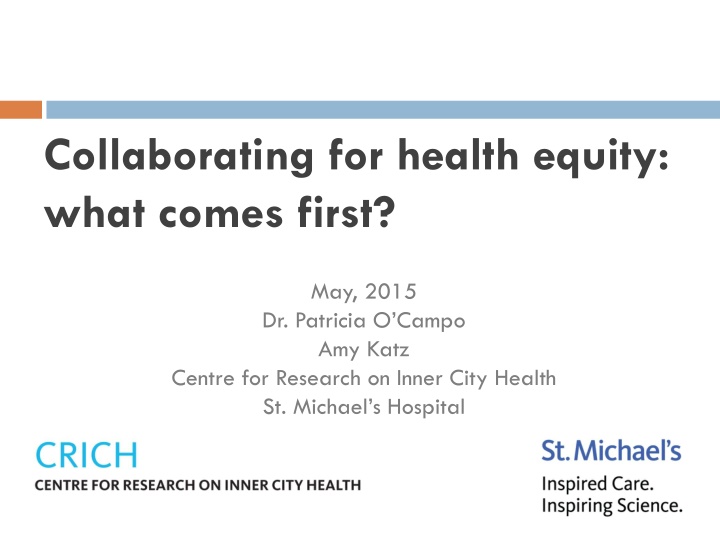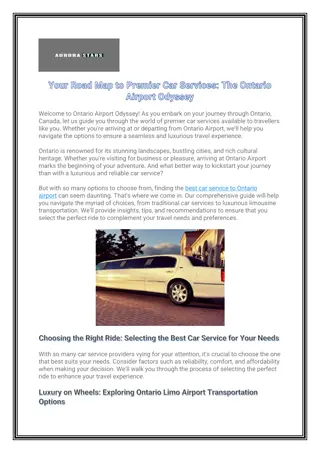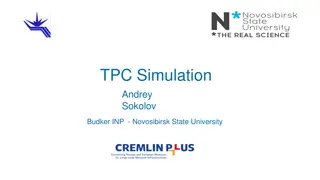
Collaborating for Health Equity: Key Strategies and Insights
Explore the journey to achieve health equity through collaboration in urban settings. Unpacking the question, defining terms, and shifting focus from technical solutions to power relations are key themes discussed in this insightful study. Discover the importance of equitable collaborations for driving meaningful change.
Uploaded on | 0 Views
Download Presentation

Please find below an Image/Link to download the presentation.
The content on the website is provided AS IS for your information and personal use only. It may not be sold, licensed, or shared on other websites without obtaining consent from the author. If you encounter any issues during the download, it is possible that the publisher has removed the file from their server.
You are allowed to download the files provided on this website for personal or commercial use, subject to the condition that they are used lawfully. All files are the property of their respective owners.
The content on the website is provided AS IS for your information and personal use only. It may not be sold, licensed, or shared on other websites without obtaining consent from the author.
E N D
Presentation Transcript
Collaborating for health equity: what comes first? May, 2015 Dr. Patricia O Campo Amy Katz Centre for Research on Inner City Health St. Michael s Hospital
CFPC Conflict of Interest Disclosure of commercial support Presenter Disclosure Presenter: Amy Katz and Judith Otto Relationships with commercial interests: Grants/Research Support: None Speakers Bureau/Honoraria: None Consulting Fees: None Other: None
WE WERE ASKED BY THE WORLD HEALTH ORGANIZATION TO ANSWER THIS QUESTION: WHAT IS THE BEST WAY TO BRING DIFFERENT STAKEHOLDERS TOGETHER TO COLLABORATE FOR HEALTH EQUITY IN URBAN SETTINGS?
Getting started How we approached the question had a lot to do with our work and experiences.
We had to spend some time unpacking the question and defining our terms. We re saying equity and collaboration all the time, but we rarely make precise what we mean.
Defining our question Once we d defined our terms, and started doing the research, a message emerged from some of the literature: It s not about better technical solutions to stakeholder engagement. It s about a shift in power relations.
Plainly stated, there are no technical solutions to political problems. - Ahmed Bayoumi and Adrian Guta
It is clear that the obstacles to achieving sustainable development are not technical; they are political. - Input from civil society groups into the post-2015 development agenda
SO WE SHIFTED FROM THE: HOW? (TECHNICAL SOLUTIONS) To the: under what conditions? (what makes it possible to have equitable collaborations that lead to concrete change)
Doing the research We explored what the evidence says about the overlapping dynamics that contribute to the inequitable distribution of power and consequent urban health inequities. These include but are not limited to colonization; racism; misogyny; and discrimination due to age, perceived ability, gender identity, sexual orientation, health status, mental health status, migration status, ethnicity, religion or class.
On a global level, civil society groups have identified neoliberal economic processes as key to inequalities in power relations that lead to disparities in health: Privatization of public goods. Shrinking of public sector. De-regulation (eg. utilities like hydro, how money flows, of rental markets). The application of private sector management techniques and metrics to social services.
We tried to find a case that demonstrated how some types of power dynamics could shift to allow for more equitable decision-making processes related to urban governance.
We found one. http://naga.gov.ph/see-naga/attractions
Naga City Peoples Council concretizes the spirit of peoples participation and advances the principle of partnership in local governance by the local government. (Naga City People s Council website)
But how did it happen? http://goturismoateneo.blogspot.ca/2012/10/naga-city-maogma-lhttpfarm4staticflickr.html
Grassroots groups didnt collaborate with landlords and government to achieve equitable governance.
It was 20 years of struggle by grassroots groups that led to the institutionalization of new and equitable urban decision-making processes.
Right now, in cities around the world, people facing barriers to socio-economic equality are working to dismantle these same barriers. But instead of receiving help from powerful actors, they are often met with enormous resistance that ranges from violence to co-optation.
I sit on a man's back, choking him, and making him carry me, and yet assure myself and others that I am very sorry for him and wish to ease his lot by any means possible, except getting off his back. Leo Tolstoy, Writings on Civil Disobedience and Nonviolence (1886)
So does it ever make sense for grassroots groups to collaborate with institutional processes?
Potentially constructive intersections: When there are genuinely non-conservative parties and independent grassroots groups. (Souza) When resident groups have the resources they need to have clout in the process (eg. hired organizers, lawyers, etc.). (Arnstein) When people want to learn about processes so they can take independent action, subvert processes, resist processes. (Souza, Olesen)
Ladder of Citizen Participation Sherry Arnstein, 1968 [Arrows inserted by us!]
So What can organizations that want to collaborate, that are mandated to collaborate, that feel they should collaborate, do?
#1 Be clear about you/your organization s motivations, intentions and limits. Unpack the point of the exercise. It s not always easy to see this at first. Take time to reflect. Stop for second if you can (even though many forces will often conspire to stop you from stopping for a second).
#2 Once you understand what you are actually doing and who you are serving (eg. is your first allegiance to a funder, an organization, a management structure, etc. or is the process genuinely able to consider and respond to input), communicate transparently about the process. If the process is not binding if input from stakeholders is to be treated as suggestions make this clear. Are there resources on the table? Quantify them. People deserve to know what they/we are engaging in.
#3 If you can do so without co-optation (eg. trying to control the agenda, sucking up people s time into organizationally-defined projects, burdening them with excessive paperwork, etc.), offer resource progressive grassroots groups: Funds Space Healthy food Child care Facilitation supports Transportation supports Printing Legal services Hoteling (providing desk, computer, phone, etc.) Trusteeship (i.e. flowing funds)
None of these suggestions would be easy or even always safe to operationalize in many organizations. There are no easy answers to any of this And, sometimes, trying to create protocols for and/or functionalize what are, essentially, creative and even subversive processes can drain them of their meaning.
So maybe the best thing to do is starting talking about it together and see what happens.






















